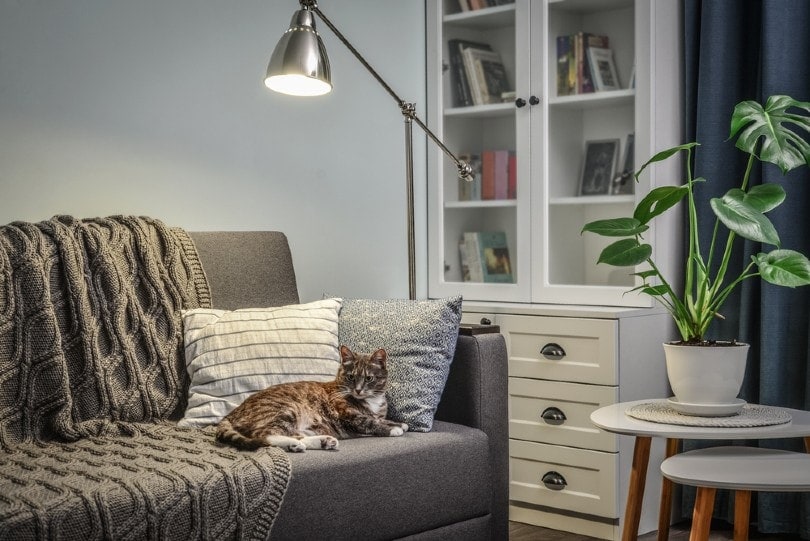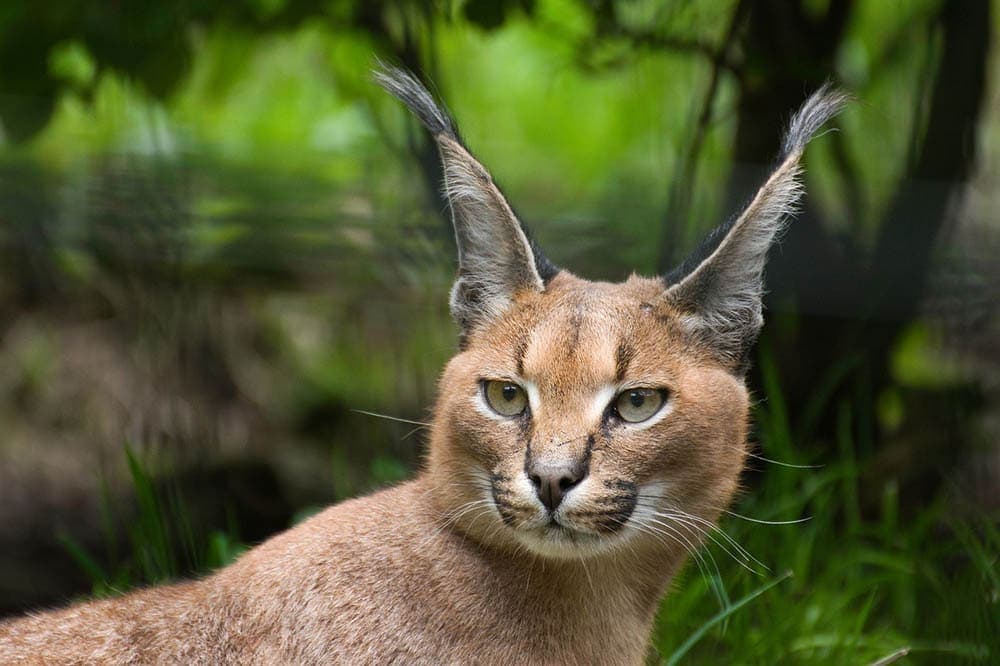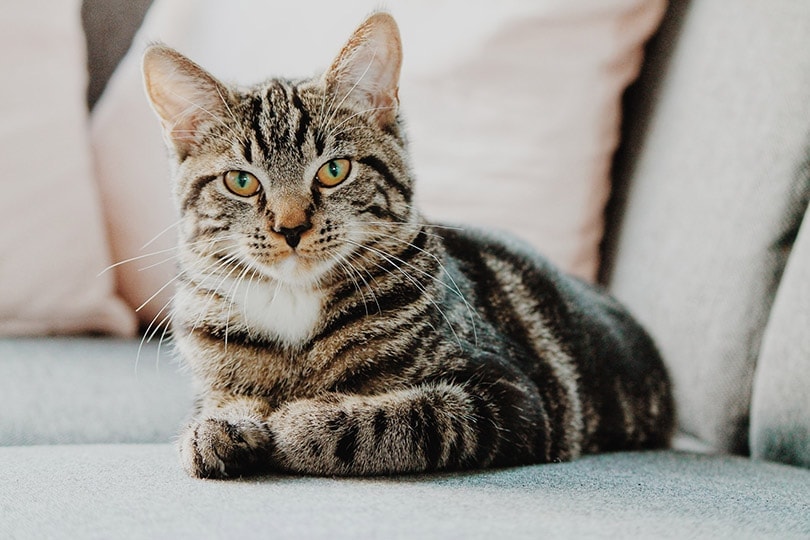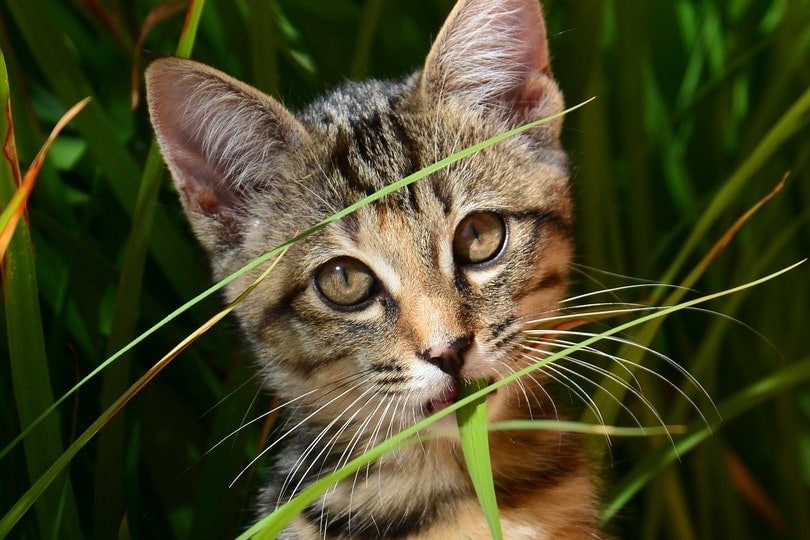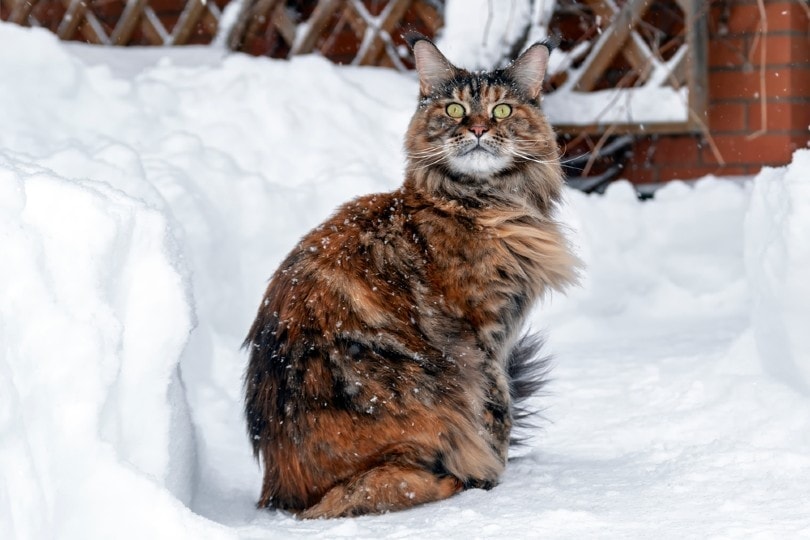Owning a cat requires always being on guard to some extent, ready to protect your home’s precious belongings. Whether they are tearing runs into your new rugs, scratching up your trim, or climbing up your new curtains—it seems like they’re always ripping into something—not to mention all the hair you have to vacuum up daily.
So, if you’re planning on buying a new, hugely anticipated item, you may want to know the best way to protect it from your feline. On the one hand, that suede loveseat is calling your name—on the other, it’s the perfect material to drag some claws through. So, what are the most durable material options for your precious home furnishings?
The Best Materials for Cats
You want your home to be both practical and stylish, right? Well, when you own pets, you sacrifice a lot of the fancy stuff for the sake of it not being worth the fight. But that doesn’t mean you need to have torn up pieces of furniture lying around.
Here are the top choices that we have tested—finding that each one of these materials is durable, well-made, and easy to clean. If you need something to stand the test of time—have a look here.
1. Microfiber Fabric — Best for Scratching
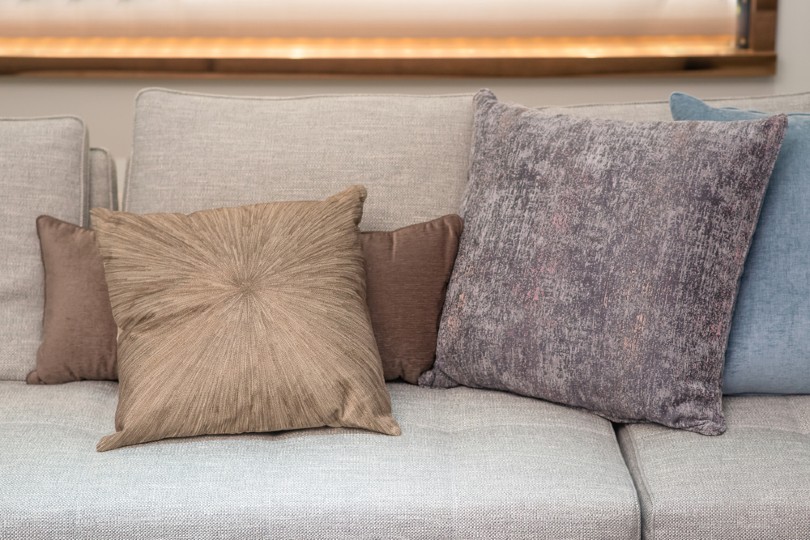
Microfiber is a synthetic polyester-nylon material that is becoming more popular as the years pass. Faux suede is a form of microfiber, and it is easy to clean, repelling water damage. While many love it because they find it fresh and stylish, it also combats against cat-clawing fits of rage.
The texture is undesirable for cat claws. It doesn’t give them the amount of friction and resistance they crave. If cats do decide to give it a whirl anyway, the tightly wound fabric doesn’t tear or unravel easily.
Even if your couch or furniture takes a few lashings, it’s likely to do minimal damage. Your cat will probably be more interested in other materials that satisfy their desires (watch out, wall trim).
One thing that might be a downfall, depending on your situation, is that microfiber isn’t always stain-resistant. If you have animals that are making messes, put down additional protection measures to defend against permanent stains.
- Withstands heavy scratching
- It doesn’t provide cats’ desired resistance
- Not stain resistant
2. Vinyl or Leather — Best for Messes

Both vinyl and leather are incredibly versatile and cleanable. Cat lovers adore these fabrics because nothing sticks to them—including hair, urine, and hairballs. You won’t have to worry about these liquids sinking into your cushions.
Genuine leather furniture might be more expensive than some other fabrics, but it can really be worth investing in as a pet parent. Vinyl is faux leather that is less expensive but might not have the same longevity.
While this material is terrific for combatting liquid messes and hair, it isn’t a superb option for scratching. This material is durable, but it will eventually run or tear with enough force. Vigorous scratchers can do some real damage if they have enough perseverance.
- Long-lasting
- Doesn’t soak in liquids
- Wipes clean easily
- Might be expensive
- Isn’t scratch-resistant
3. Velvet — An Honorable Mention

First, velvet isn’t a material that fits in every décor style—but it holds up quite well against pet damage. At first glance, you might think that velvet is soft, so it tears easily. But this material is actually incredibly tough, withstanding everyday use and even clawing.
To reduce staining, velvet can be covered with waterproof treatments to reduce saturation and repel unwanted imperfections. Even though removing hair won’t pose much of a challenge, it still attracts and collects fur, pretty much guaranteed.
That is nothing that a quick handheld vacuum can’t sweep up, though. We admit—it’s a little bit trickier to clean than some of the other options, but it is still up to par with the top materials.
- Can use waterproofing treatment
- Withstands clawing
- Vacuums easily
- Collects hair
Other Helpful Tips
Rather than fighting your cat daily to keep them from destroying your stuff, you can protect your belongings and/or attract your cat with feline-friendly items. It’s best to channel this natural behavior toward claw-friendly areas of the home. Offer many different-sized cat scratching posts to curb and attract them.
If your cat is notorious for shredding your couches, you can buy protectors for the corners of your furniture. On many popular sites, you can look through various fitted cat scratching posts that channel your cat’s natural impulses.
If they are excessive shedders, hairball chuckers, or vomiters, you may want to invest in furniture covers that are water-resistant. Adding an extra layer of protection will ensure that any nasty fluids stay away from your valuable material.
Companies also make treatments that are safe for certain materials you can apply to the couch. These products help reduce tracking, staining, and liquid spills.
Final Thoughts
You can have nice things and own pets at the same time. Sometimes, you just have to do your homework to find out ways that you both can have what you want. Protecting furniture doesn’t have to be a daunting task.
Once you find a material that combats your specific feline-related issue, you can put further reinforcements down to ensure your belongings are protected from sharp nails, fur collection, and bodily waste.
Featured Image Credit: mama_mia, Shutterstock
